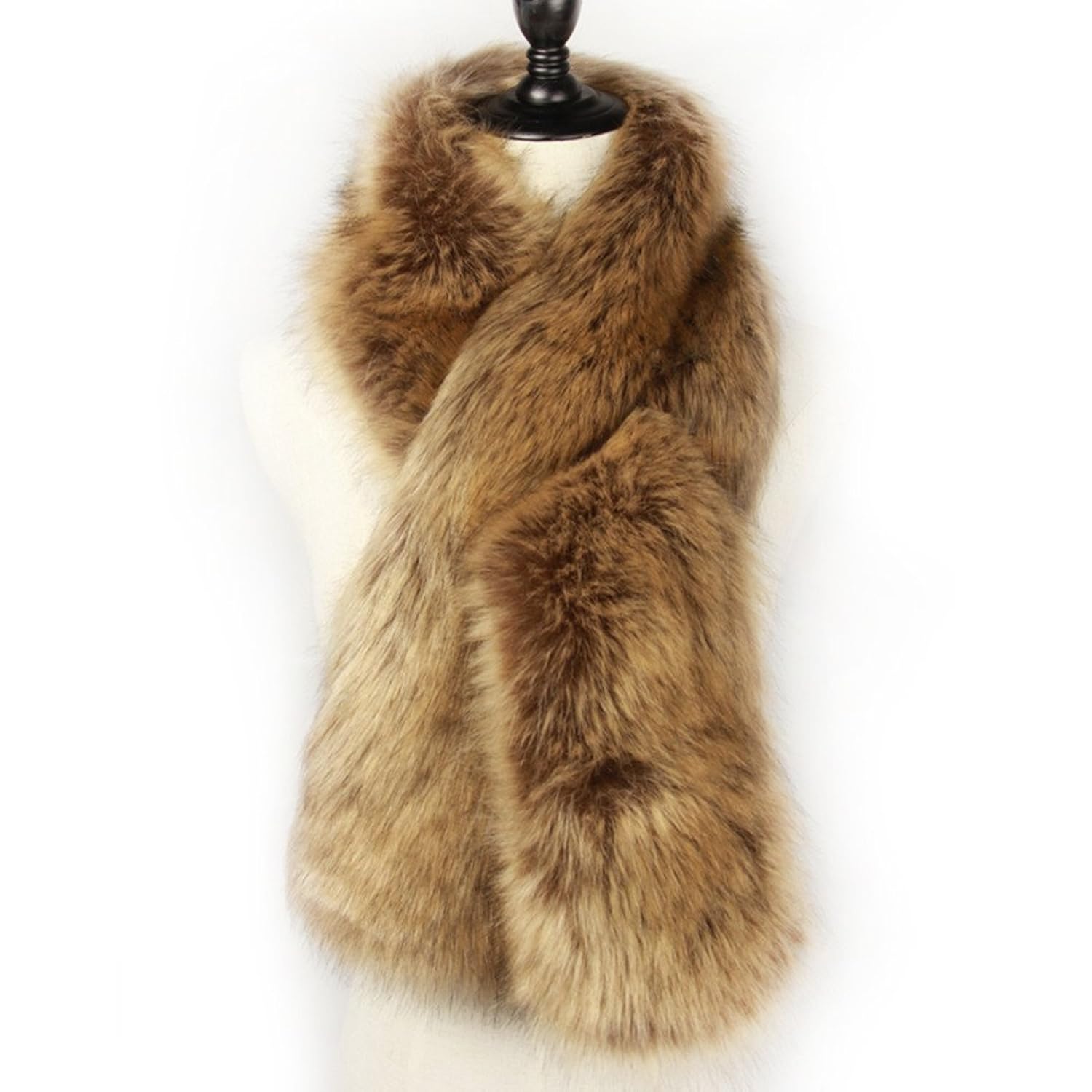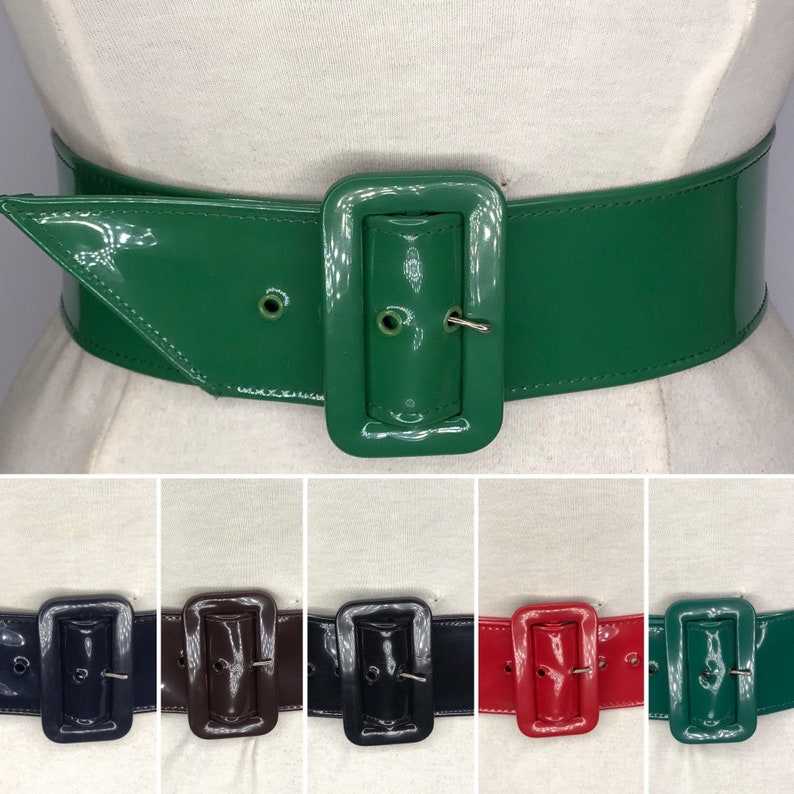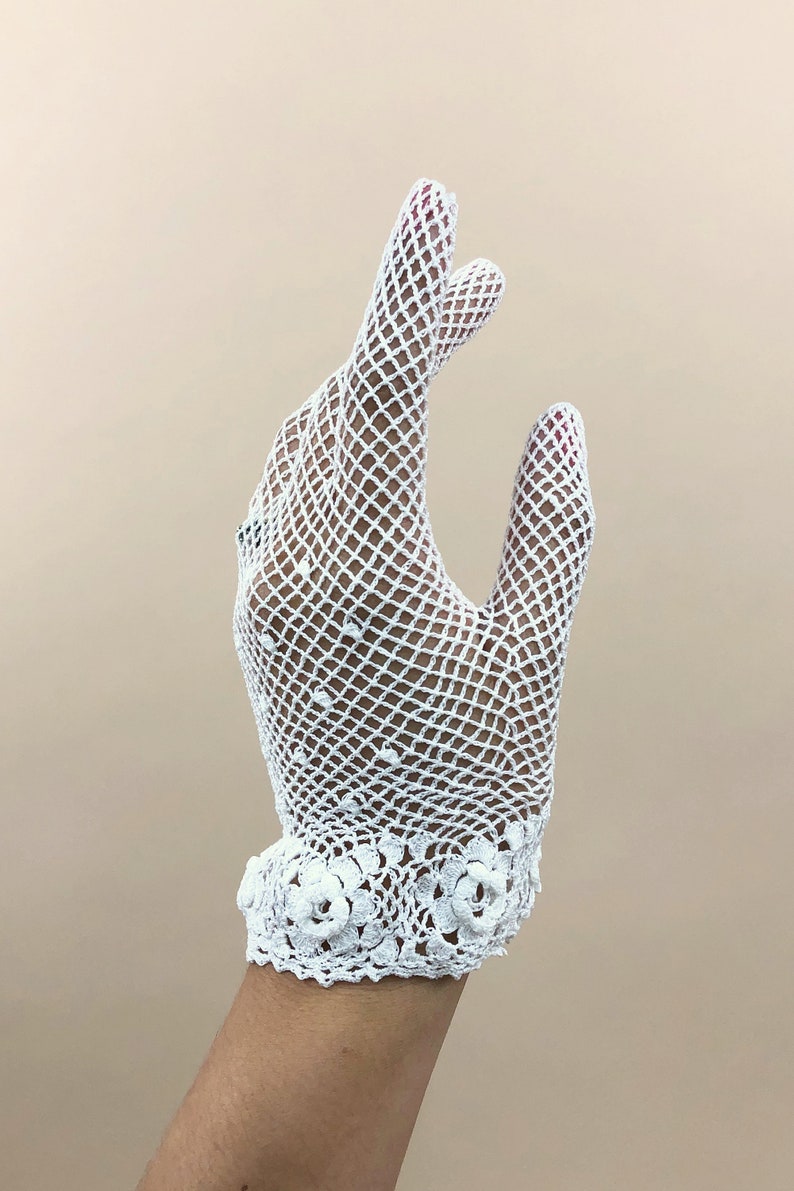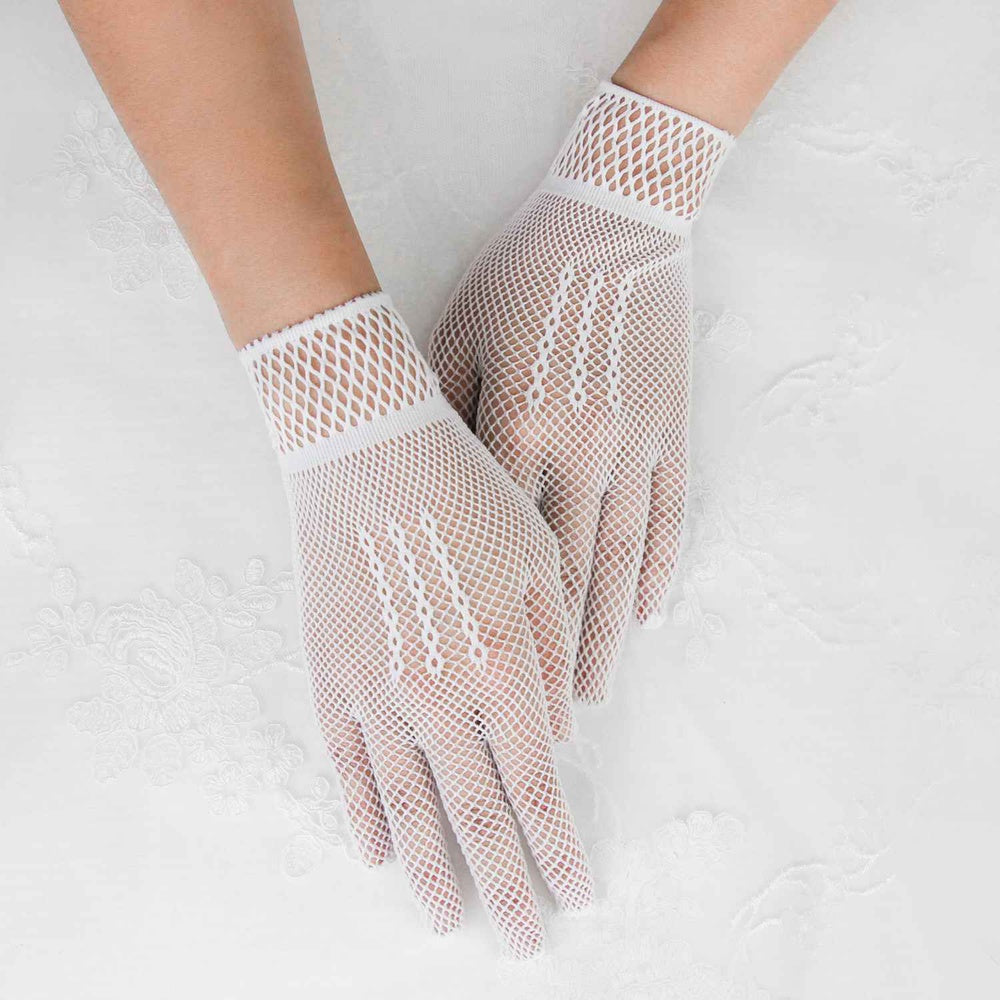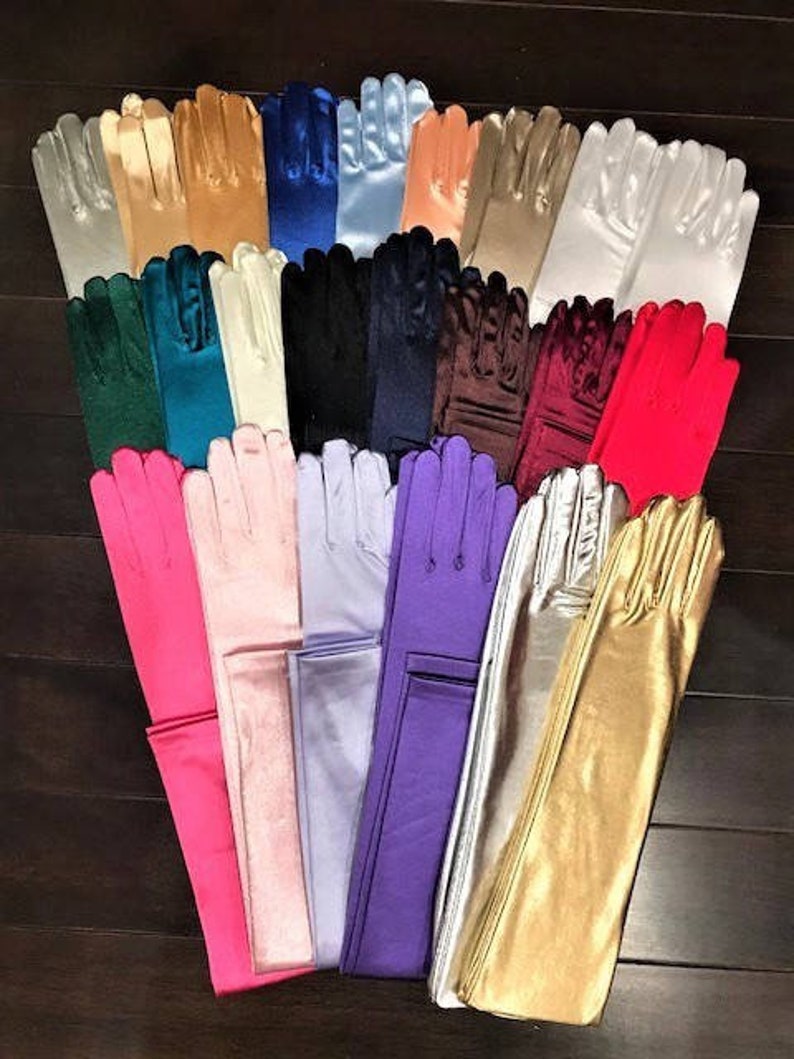The purse and hat were the two biggest 1940s accessories a woman wore, but they were not the only way to dress up an outfit. Most women wore a belt with their dress, suit, or skirt. They were necessary, but not emphasized until the late 1940s. Gloves had more style, being worn whenever a woman left the house. They usually coordinated with a purse or hat when finances allowed. The often overlooked accessory, the head scarf, helped women cover up hair between beauty parlor sessions and provided fashionable warmth in winter.
1940s Belt Styles
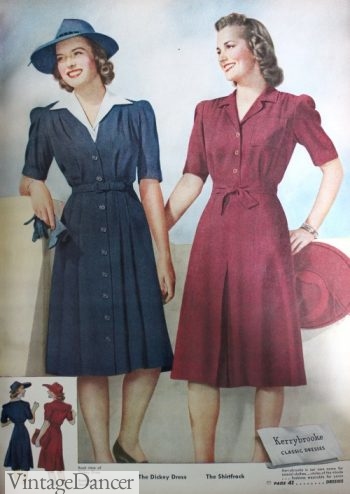
1942 matching fabric belts in buckle and tie styles
Most dresses were sold with matching fabric belts and fabric covered belt buckles. The trend for contrasting leather belts in the 1930s had to end during the war years, when leather was in short supply. 1940s belts were thin (1.5 to 2 inches) and very plain. Belt buckle shapes were taken directly from menswear designs with larger holes and a chunkier buckles than the dainty ’30s styles. The slide buckle that was popular in the 1930s remained common in the early ’40s as well. It didn’t hold a woman’s nipped in waist line well enough to remain popular past 1942.
To conserve on metal, the tie belt was featured on many early ’40s dresses. It was simply a matching piece of fabric tied around the waist with a double knot in front.
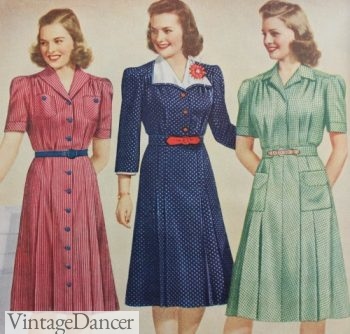
1942 contrasting belts on dresses matched other details such as buttons
Belts didn’t always match. Contrasting fabric belts may have been worn if buttons or a dress collar were also contrasting. Some belts combined a fabric body with a contrasting fabric or leather buckle. Belt that contrasted entirely with an outfit were usually black, which became very trendy in the second half of the decade.
Belts were mostly unchanged until the late 1940s. Starting around 1947, belts became a noticeable accessory. They grew in width up to 3 inches, with more contrasting colors and heavier materials such as leather, plastics, velvet, and handade knits.
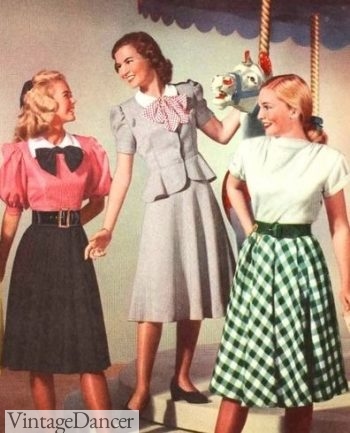
1948 Teens wearing wide belts
These “New Look” belts came in several iconic shapes:
Rectangular – A straight belt piece with or without oversized square or circle buckles.
Polo belts – These had two or three thin buckles across a rectangle or shaped stomacher. They were usually made of patent leather.
Stomacher – A corset shape with wide center that narrowed around the sides, it was inspired by the Victorian Medici belt. They sometimes had corset laces at the back instead of a buckle. Black patent leather or velvet were common.
Western – Tooled leather belts with silver etched buckles were worn by many country women. Rhinestones also embellished many western and modern belts.
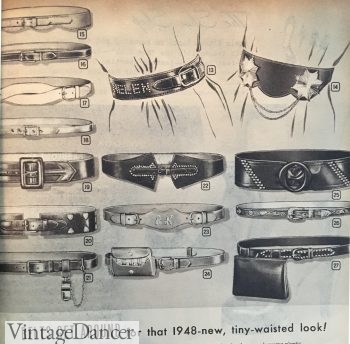
1948 thin and wide leather and plastic belts, some with western influences
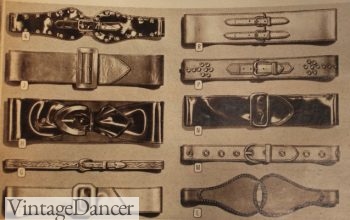
1948 wide patent leather belts
1940s Vintage Gloves
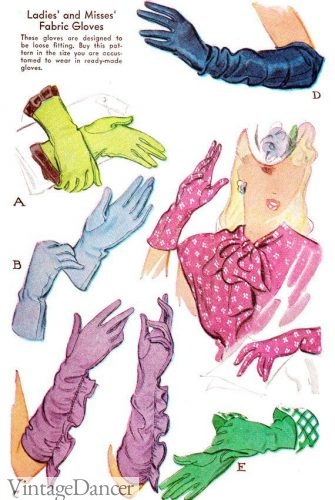
Ruched 1940s glove patterns
Daytime dress gloves were usually made from soft fabrics, leather, or suede in dark neutral colors like navy, tan, brown, and black (although dark red, pink, blue and green were also used). White was also common for those who could keep them clean. The 1930s gauntlet style narrowed down to a slight taper over the mid arm and fancy cuffs, trim, and decorations disappeared. Elbow-length leather or fabric gloves were worn straight or pushed down towards the wrists for a more stylish look. This ruched effect mimicked the ruching common on women’s dresses even purses.
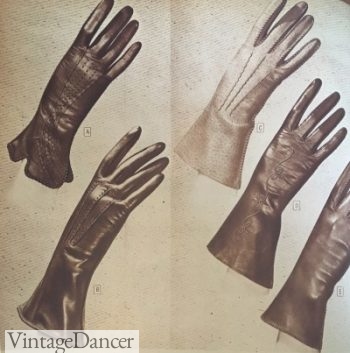
1944 simple leather gloves
1940s gloves weren’t even necessary for evenings anymore, but women wore them more at night, sometimes attempting to make a daytime dress fancier for an evening occasion. White or ivory wrist-length kid leather gloves were a popular choice, and shirred stretch rayon over-the-elbow gloves in a variety of colors really amped up the glamour.
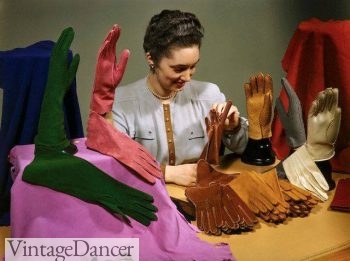
1947 suede gloves for women and men
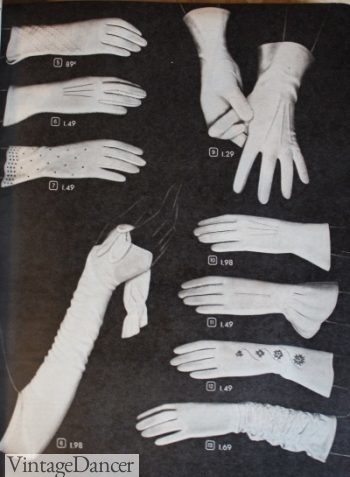
1948 white gloves for day and evening
In the 1940s, gloves were coordinated to a hat, dress or suit, not necessarily to multiple accessories. Being entirely matchy matchy was something introduced in the 1950s.
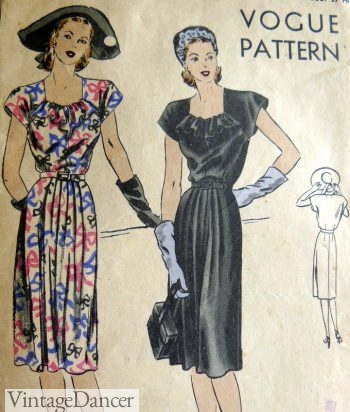
1940s semi formal dress with gloves that matched hats
1940s Scarves
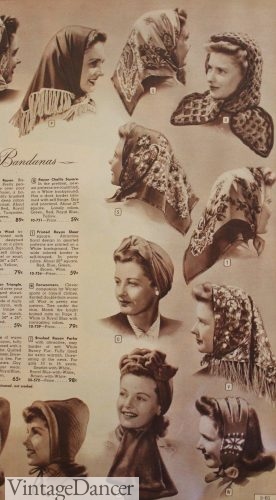
1940s summer and winter scarves
Scarves moved from neckwear to headwear in the 1940s. Triangular 20-33 inch “babushka”or “kerchief” scarves wrapped around the head and tied under the chin in summer and winter. Summer scarves were made of silk (after the war), rayon challis, or sheer rayon. They featured colorful peasant floral prints. Red, blue, green, brown, wine, yellow scarves were accented with an optional white or grey fringe. Many women also used scarves to tie up hair into a snood or turban. More on that here.
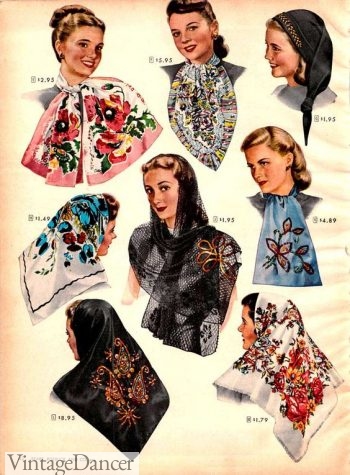
Colorful big prints on late 1940s scarves.
Most winter scarves had fringe and were made of cotton or rayon blended wool for warmth. Knitting books and magazines of the 1940s even show matching mother and child sets, in which both would sport hats and scarves of matching yarns and patterns.
During 1940 up to 1945, English textile company Jacqmar produced scarves with propaganda designs and motifs. The scarves featured slogans such as ‘Salvage Your Rubber’, and ‘Into Battle’. The company also utilized motifs inspired by the Armed Forces. The Army, Navy, and Army Air Force were all featured in Jacqmar designs. These scarves were known as propaganda scarves and were made to help keep up the morale of civilians.
By the end of the 1940s, scarves featured bolder colors, bigger prints, and moved back down to the neck to tie like a dickey. They also grew bigger, up to 35 inches, draping down the back.
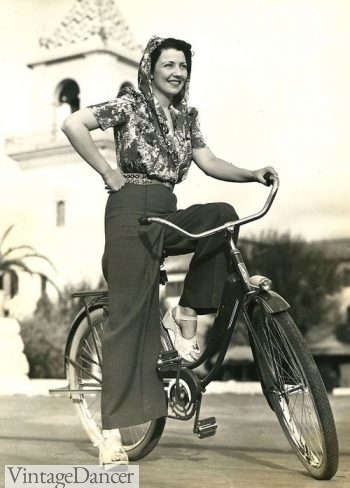
1943, a scarf keeps her hair fresh while bike riding
For more 1940s accessories, look at these articles:
- 1940s women’s jewelry history
- 1940s women’s purses
- 1940s women’s hat styles
- 1940s women’s hair accessories
- 1940s sunglasses and reading glasses
- Men’s 1940s accessories : watches, belts, suspenders, scarves
Shop 1940s Inspired Accessories:
Debbie Sessions has been teaching fashion history and helping people dress for vintage themed events since 2009. She has turned a hobby into VintageDancer.com with hundreds of well researched articles and hand picked links to vintage inspired clothing online. She aims to make dressing accurately (or not) an affordable option for all. Oh, and she dances too.


